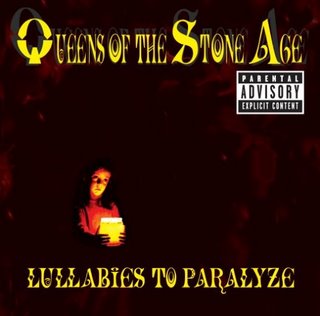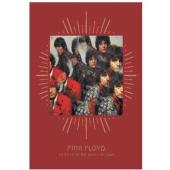Mvh. Jens/Modifix
Hvilken CD købte du idag?
65 indlæg
• Side 2 af 5 • 1, 2, 3, 4, 5
Raskolnikov skrev:Billie Holiday har rigtig lækker lyd
Helt sikkert - det kan ikke høres, at det er så gammel en indspilning...(1957) 
Oscar P. har faktisk også en rigtig go' varm klang... Den kan varmt anbefales! 

-

LA MOTTA - Moderator
- Indlæg: 291
- Tilmeldt: tirs aug 28, 2007 19:01
- Geografisk sted: Vejen
Det blev (igår) til:
Dire Straits: "On the night" og "On every street", de er sååå fede!!
Jack Johnson: "In between dream"...skal jeg ha hørt noget mere.
Svenska Kammarorkestern: Mozart: "Eine kleine Nachtmusik"...kræver også noget mere lytning.
Dire Straits: "On the night" og "On every street", de er sååå fede!!
Jack Johnson: "In between dream"...skal jeg ha hørt noget mere.
Svenska Kammarorkestern: Mozart: "Eine kleine Nachtmusik"...kræver også noget mere lytning.
Ignorance is bliss...
- Carlos
- Entusiastmedlem
- Indlæg: 151
- Tilmeldt: tirs maj 23, 2006 19:38
- Geografisk sted: Sønderjylland
Fik denne af kæresten idag.

"Everybody knows that you are insane" er et fedt nr!"

"Everybody knows that you are insane" er et fedt nr!"
Hands off the compression button music industry!
Sådan poster man billeder:
http://nerds.dk/?page=viewtopic&mode=reply&t=4420
Bourne trilogien
http://www.hifi-musik.dk/?page=visartikel&id=208
Sådan poster man billeder:
http://nerds.dk/?page=viewtopic&mode=reply&t=4420
Bourne trilogien
http://www.hifi-musik.dk/?page=visartikel&id=208
-

Raskolnikov - Supermedlem
- Indlæg: 6734
- Tilmeldt: tirs jan 03, 2006 15:19
- Geografisk sted: Nope
Fik disse to idag. Den nette sum af 100 Kr. i TP
Først en klassisk NIN

Nr. 2 er Las Vegas bandet ( selvom de lyder britiske ) The Killers. En god skive, men lyden er godt nok komprimeret og MP3 agtig...

Først en klassisk NIN

Nr. 2 er Las Vegas bandet ( selvom de lyder britiske ) The Killers. En god skive, men lyden er godt nok komprimeret og MP3 agtig...

Hands off the compression button music industry!
Sådan poster man billeder:
http://nerds.dk/?page=viewtopic&mode=reply&t=4420
Bourne trilogien
http://www.hifi-musik.dk/?page=visartikel&id=208
Sådan poster man billeder:
http://nerds.dk/?page=viewtopic&mode=reply&t=4420
Bourne trilogien
http://www.hifi-musik.dk/?page=visartikel&id=208
-

Raskolnikov - Supermedlem
- Indlæg: 6734
- Tilmeldt: tirs jan 03, 2006 15:19
- Geografisk sted: Nope
Denne dumpede ind af døren idag.


Hands off the compression button music industry!
Sådan poster man billeder:
http://nerds.dk/?page=viewtopic&mode=reply&t=4420
Bourne trilogien
http://www.hifi-musik.dk/?page=visartikel&id=208
Sådan poster man billeder:
http://nerds.dk/?page=viewtopic&mode=reply&t=4420
Bourne trilogien
http://www.hifi-musik.dk/?page=visartikel&id=208
-

Raskolnikov - Supermedlem
- Indlæg: 6734
- Tilmeldt: tirs jan 03, 2006 15:19
- Geografisk sted: Nope
Soulwax any minute now og remix cd'en nite versions røg lige ind af døren idag. Det er virkelig nogle syrede covers. 
Samlet pris 110 ; kr. fra Play.com


Samlet pris 110 ; kr. fra Play.com


Hands off the compression button music industry!
Sådan poster man billeder:
http://nerds.dk/?page=viewtopic&mode=reply&t=4420
Bourne trilogien
http://www.hifi-musik.dk/?page=visartikel&id=208
Sådan poster man billeder:
http://nerds.dk/?page=viewtopic&mode=reply&t=4420
Bourne trilogien
http://www.hifi-musik.dk/?page=visartikel&id=208
-

Raskolnikov - Supermedlem
- Indlæg: 6734
- Tilmeldt: tirs jan 03, 2006 15:19
- Geografisk sted: Nope

The Mravinsky Edition (Pris hos MDT for 12 cder 21.50£).
CD1, 2, 3 Shostakovich
Symphony No.5 in D minor Op. 47
Symphony No.10 in E minor Op. 93
Symphony No.12 in D minor Op. 112 "1917"
CD4 & 5 Tchaikovsky
Symphony No.5 Op. 64 in E minor
Symphony No.6 in B minor Op. 74
CD6
Tchaikovsky: Francesca da Rimini Op. 32
Mussorgsky: Dawn over the Moscow River
Glinka: Russlan & Ludmilla - Overture to Act 1
Glazunov: Raymonda Suite
CD7 Mozart
Symphony No. 33 KV 319 in B flat major
Symphony No. 39 KV 543 in E flat major
CD8, 9, 10 Beethoven
Symphony No. 1 in C Major Op. 21
Symphony No. 3 Op. 55 in E flat major
Symphony No. 5 in C minor Op. 67
Symphony No. 7 in A major Op. 92
Symphony No. 6 in F major Op. 68
CD11 Wagner
Götterdämmerung - Siegfried's funeral march
Tristan und Isolde - Prelude & Liebestod
Die Walküre - The ride of the Valkyries
Tannhäuser - Ouverture
Lohengrin - Preludes to Acts I & II
CD12
Tannhäuser - Overture
Die Meistersinger von Nürnberg - Prelude
Evgeny Mravinsky tells stories about nature and talks about his life

'DUKE ELLINGTON
Black, Brown and Beige Suite; Three Black Kings; New World a-Comin'; Harlem
American Composers Orchestra
Maurice Peress
Nimbus- 2511(CD)
This disc, rescued by Nimbus from the purgatory of the Musicmasters catalog, is quite simply the finest collection of symphonic Ellington ever recorded. In Maurice Peress we have a conductor who combines a complete idiomatic grasp of the music with the ability to really conduct a large symphony orchestra confidently and charismatically. He has the American Composers Orchestra playing with the perfect combination of rhythmic freedom and corporate discipline. The various saxophone, piano (Roland Hanna), trumpet, and clarinet soloists are all top-notch, and they do Ellington proud.
This large-scale arrangement of Black, Brown and Beige nicely complements Peress' version for this same label of the complete work in its original jazz-band scoring (hopefully Nimbus will issue that as well). Harlem has seen other recordings, most notably Järvi's on Chandos, but this one has more sass, thanks to its sharper rhythmic profile. Three Black Kings, scored here by Luther Henderson, by rights ought to be a repertory piece alongside such favorites as An American in Paris. I don't need to go on, save to say that the sonics were and remain excellent, and that this release belongs in every serious classical and jazz collection. If you didn't get it the first time around, now's your chance.
--David Hurwitz

Dutch vocal group Frommermann is named after Harry Frommermann, who in 1927 founded the Comedian Harmonists. This German ensemble, comprised of five singers and a pianist, was a huge sensation in the late 1920s and early 1930s. The Comedian Harmonists were renowned for their broad variety of vocal styles and the fine sense of humour with which they performed close harmony music. Within a short period of time they became international celebrities, performing throughout Europe and the United States. In 1935 the Nazis forced the Comedian Harmonists to disband, thus silencing them forever. In December 2004, at the request of the Grachtenfestival Amsterdam, tenor Marcel Reijans brought together a group of fellow singers and a pianist who shared his love for the music of the Comedian Harmonists. With this group, each of its members busy with (inter)national singing careers, ‘Broken Silence’ was created, a theatre programme paying tribute to the Comedian Harmonists. Under the direction of renowned Dutch actor Peter Blok, Frommermann broke the silence that had been imposed on the Comedian Harmonists and gave their music a new voice in the Netherlands.
FROMMERMANN: CREATOR OF EUROPEAN VOICE THEATRE
Along with the American soldiers joining the armed forces on the European battlefields in 1916 came a style of music that was new to Europe: jazz. After the fighting ended (November 1918) the population was desperate for entertainment. They found it in the lively dixieland, the charleston and other forms of the New Orleans jazz, and in latin- American variations such as the rumba. Songs sung in close harmony became popular as well, both spirituals and songs with worldly lyrics. The records and performances of the five-member a cappella singing group The Revelers, with songs like ‘Ol’ Man river’ and ‘When Yuba plays the rumba on the tuba’ were widely appreciated in Europe. After listening to a record in 1927 and hearing the perfect part-song and the catchy music, the 21 year-old stage actor Harry Frommermann became so enthused that he decided to form a similar group, with German repertoire.

Marc-André Hamelin’s technical and interpretative brilliance over an extraordinarily wide range of repertoire has placed him firmly in the top rank of living pianists. His recent recordings of Alkan and Haydn were universally acclaimed in the highest terms. In this latest recording, Hyperion presents Marc-André Hamelin ‘in a state of jazz’, as he turns his attention to the music of Kapustin, Antheil, Gulda and Weissenberg—all composers who felt keenly that there was a fundamental desire on the part of the concert-going public to hear something different. This wonderful disc is full of surprises—as Hamelin writes in his entertaining yet scholarly liner notes, ‘There is no jazz in this recording. At least not in the traditional sense … There is much to be enjoyed here, and much to be amazed by’.
mvh. SES.
To listen is an effort, and just to hear is no merit. A duck hears also. Igor Stravinsky
Vi har alle lært at skjule vore fordomme, og vi viser ikke vore forkerte meninger. PO Enquist 1976.
To listen is an effort, and just to hear is no merit. A duck hears also. Igor Stravinsky
Vi har alle lært at skjule vore fordomme, og vi viser ikke vore forkerte meninger. PO Enquist 1976.
-

SES. - Supermedlem
- Indlæg: 2578
- Tilmeldt: tirs okt 25, 2005 06:58
- Geografisk sted: Midtfyn
just bestilt. 




Hands off the compression button music industry!
Sådan poster man billeder:
http://nerds.dk/?page=viewtopic&mode=reply&t=4420
Bourne trilogien
http://www.hifi-musik.dk/?page=visartikel&id=208
Sådan poster man billeder:
http://nerds.dk/?page=viewtopic&mode=reply&t=4420
Bourne trilogien
http://www.hifi-musik.dk/?page=visartikel&id=208
-

Raskolnikov - Supermedlem
- Indlæg: 6734
- Tilmeldt: tirs jan 03, 2006 15:19
- Geografisk sted: Nope
Denne kommer forhåbentlig inden weekendene. har ikke fået hørt så meget musik her på det sidste, men regner med at høre en masse i weekenden. Dejligt. 
http://www.play.com/Music/CD/4-/3434608/The-Piper-At-The-Gates-Of-Dawn/Product.html

Glæder mig til at høre det originale mono mix.
http://www.play.com/Music/CD/4-/3434608/The-Piper-At-The-Gates-Of-Dawn/Product.html

Glæder mig til at høre det originale mono mix.
Hands off the compression button music industry!
Sådan poster man billeder:
http://nerds.dk/?page=viewtopic&mode=reply&t=4420
Bourne trilogien
http://www.hifi-musik.dk/?page=visartikel&id=208
Sådan poster man billeder:
http://nerds.dk/?page=viewtopic&mode=reply&t=4420
Bourne trilogien
http://www.hifi-musik.dk/?page=visartikel&id=208
-

Raskolnikov - Supermedlem
- Indlæg: 6734
- Tilmeldt: tirs jan 03, 2006 15:19
- Geografisk sted: Nope
65 indlæg
• Side 2 af 5 • 1, 2, 3, 4, 5
Hvem er online
Brugere der læser dette forum: Google [Bot] og 2 gæster











